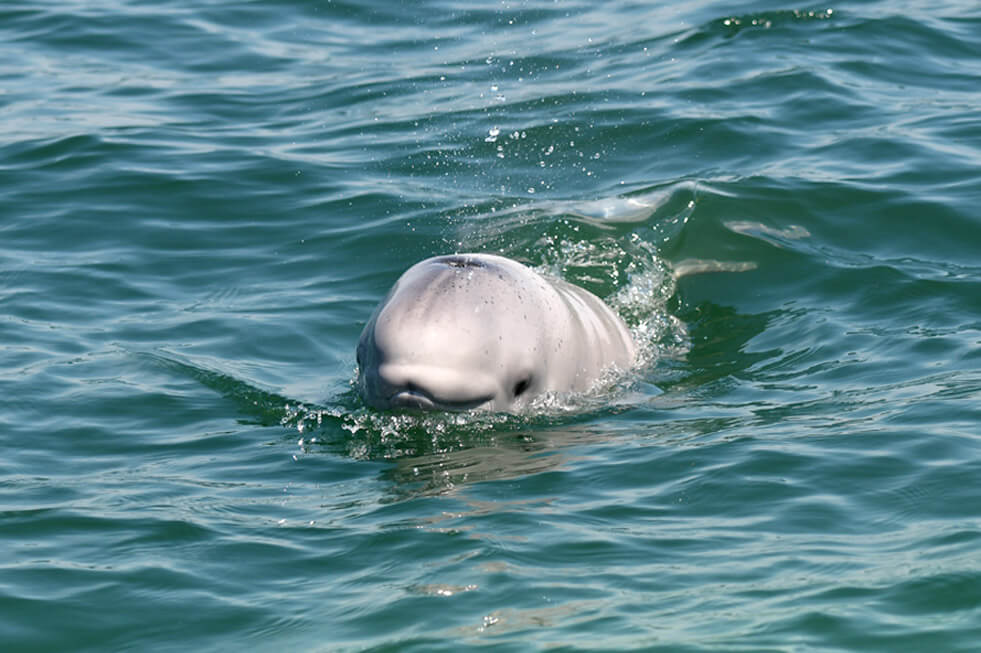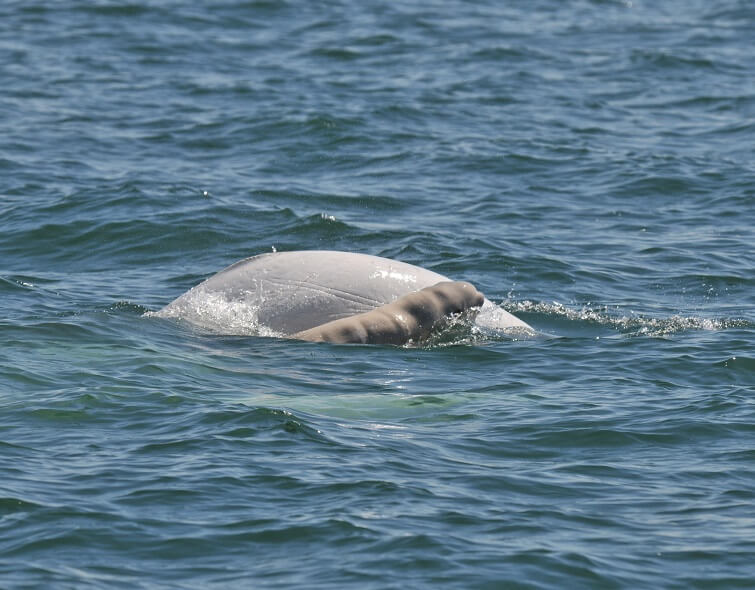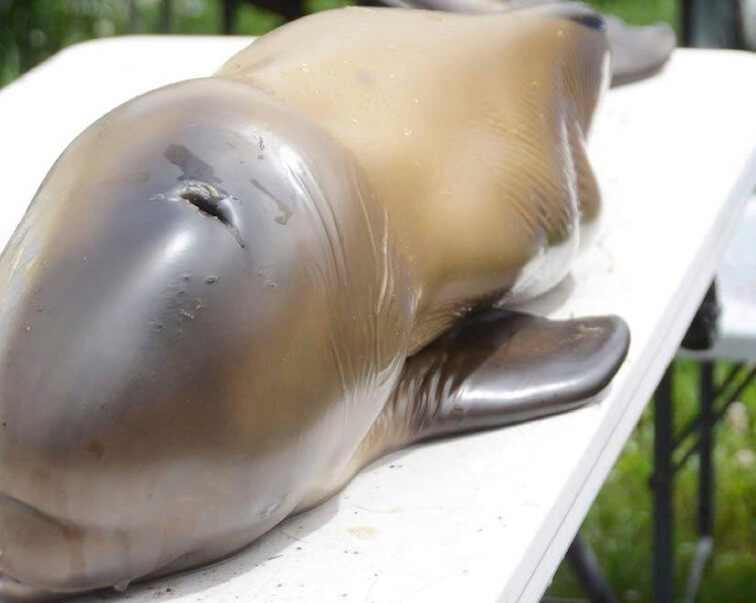Newborn belugas are born brownish before becoming grey-blue and then completely white. This gradual change of color is a common phenomenon in cetaceans. For example, killer whale calves are born orange and black before becoming white and black. The “café-au-lait” color of newborn beluga whales, therefore, pushed our readers to wonder about the reasons and mechanisms behind these color changes. Although scientists do not have a definitive answer to this phenomenon, we managed to collect several hypotheses that could explain the unusual color of baby belugas.
Each age is associated with its own color
It is quite easy to guess belugas’ ages; it all depends on their color. Baby belugas are born after fourteen or fifteen months of gestation. Females usually give birth from June to September. When they are born, newborns have a gray or brownish color, which is often referred to as “café au lait”. This color becomes progressively darker to reach a dark blue-gray during the first month of their lives.
Over the next few years, belugas become lighter and lighter until they turn completely white around their twelfth to sixteenth year. “The dark colour in young ones is associated with the presence of melanin in their epidermis” explains Stéphane Lar, professor at the Faculty of Veterinary Medicine at the University of Montreal. “The abundance of these pigments gradually decreases with age. In white adult individuals, there is no more pigment in the skin.”
Indeed, the gene coding for the production of melanin is gradually deactivated after a few years of life. In addition, beluga whales are known to shed the upper layers of their epidermis every year, which causes their skin color to turn white gradually.
An evolutionary advantage?
The gradual reduction of melanin production likely gives belugas a selective advantage. Indeed, their white color is an advantage for blending into their arctic environment in winter, among the icebergs. This camouflage technique would allow them to hide from their main predators: killer whales, polar bears, and humans!
In some species, the juveniles may have a different color from the adults, which can enhance their camouflage and protect them from predators. How could being darker in colour be advantageous to baby belugas? “One of the possible explanations is that a darker colour absorbs more heat from the sun, which may help the calves keep warm. Additionally, in the summer, during the calving season, a darker colour is less visible in the water than white, thus offering better protection against predators”, suspects the veterinarian Stéphane Lair.
Moreover, young belugas do not solely rely on their camouflage, but also depend on the unfailing supervision of the whole family, also called alloparenting. Thus, the calves receive the constant protection of adults against dangers, such as predators.
The mystery of yellow babies
To better understand the origin of the brownish color of newborns, we can look at the yellow color of other cetacean newborns.
This is the case, for example, for killer whales, which are born orange before becoming white and black. In their case, the orange color could be caused by blood vessels close to the skin surface of the animal, due to a lack of a thick enough layer of blubber. Newborn killer whales would thus gradually turn white as their blubber thickens. This process can take up to a year.
For other species of dolphins, scientists have suggested that physiological jaundice may be the cause of the yellowish coloring of newborns. We know that in humans, when a baby is born, the excess red blood cells are destroyed, causing an increase in bilirubin, an orange pigment, in the newborn’s body. Since babies’ liver are not very efficient, the excess bilirubin can take ten days to disappear, resulting in the baby’s yellow tinge. Therefore, it is possible that the yellowish color of baby dolphins is linked to this excess bilirubin, just like in humans.
Another hypothesis is that the yellowish color of young cetaceans is caused by a thin layer of algae covering the body of the newborn. In this case, the algae would be one or more species of diatoms, microscopic algae thriving in cold waters. Notably, researchers have observed films of coffee-colored algae on several bottlenose dolphins. Newborns could be particularly at risk of developing these algae films because their skin is more sensitive, and their immune system is weaker.
A baby’s skin
None of these hypotheses allowed us to definitively answer the question from our readers regarding the café-au-lait color of baby belugas. Nonetheless, in July 2021, new information peaked our interest: the research team from CERSI (Centre d’éducation et de recherche de Sept-Iles) found a stranded newborn beluga. While carrying out its necropsy, scientists noticed a thin yellow film covering the animal’s body. Even better: biologist Anik Boileau, the director of the CERSI research center, noted that every stranded newborn beluga she encountered showed a similar yellow film.
The professor at the Faculty of Veterinary Medicine, Stéphane Lair, completes this observation: “In the newborn beluga, the external layer of the epidermis is almost twice as thick as that of the embryo. It is also very thick compared to the adult’s. The particular structure of the newborn’s skin is very unstable, a molt will occur in the young, allowing desquamation and leading to a change in the skin color of the young beluga.”
What about the particular color of this layer of skin that forms a film on the body of the young beluga? “Yellow is associated with the external layer of the epidermis, which is therefore particularly thick at that stage of life”, says the veterinarian. “We also notice this yellowish coloration in adults with moulting defects, in animals with mobility issues for example. It would thus be the color of the old dead skin in moult.”
One thing’s for sure; for whale watchers, the lovely “café-au-lait” colour of newborn belugas helps to easily spot them in the herds. Quite convenient considering the first births are expected in the next few weeks!










